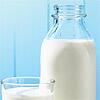
What's Hot
What's Hot
| News flashes are posted here frequently to keep you up-to-date with the latest advances in health and longevity. We have an unparalleled track record of breaking stories about life extension advances.
Flavonoids may help protect against lung cancer in smokers
Professor of public health and epidemiology Zuo-Feng Zhang, of UCLA’s Jonsson Cancer Center and colleagues compared the dietary histories of 558 men and women with lung cancer to 837 individuals without the disease. Adjusted analysis of the data found a reduced risk of lung cancer associated with an increased intake of the flavonoids epicatechin, catechin, quercetin, and kaempferol in smokers, but not among nonsmokers. Greater consumption of vegetables, tea, and wine, all excellent sources of flavonoids, was also associated with lower lung cancer risk in those that smoked. Flavonoids exert their protective effect by inhibiting angiogenesis, the formation of new blood vessels by tumors which allows them to grow and spread. The compounds also encourage programmed cell death (apoptosis). In addition, flavonoids may counter some of the cancer-initiating DNA damage caused by tobacco smoke, which could explain why a protective effect was not observed in nonsmokers. “The findings were especially interesting because tobacco smoking is the major risk factor for lung cancer,” Dr Zhang commented. "The naturally occurring chemicals may be working to reduce the damage caused by smoking.” "Since this study is the first of its type, I would usually be hesitant to make any recommendations to people about their diet," he added. " We really need to have several larger studies with similar results to confirm our finding. However, it’s not a bad idea for everyone to eat more fruits and vegetables and drink more tea.” —D Dye Adolescents need more D
“Data on appropriate vitamin D levels in the pediatric age group are lacking,” noted lead author Ghada El-Haff Fuleihan, MD, of the American University of Beirut-Medical Center in Lebanon. “This is a major obstacle to finding the right daily allowance to enhance musculoskeletal health.” To evaluate short term safety, Dr Fuleihan and his colleagues administered a placebo or 14,000 IU per week of vitamin D3 to 15 boys and 10 girls for 8 weeks. Serum 25-hydroxyvitamin D and calcium levels were measured before the treatment period and every two weeks until the end of the study. For the long term study, 172 boys and 168 girls received a placebo, 1400 IU vitamin D3 per week, or 14,000 IU per week for a year. Serum 25-hydroxyvitamin D and calcium levels were measured at the beginning of the study, and at 6 and 12 months. No signs of vitamin D toxicity were found in the participants in either study. In the long term study, only the high dose of vitamin D elevated serum 25-hydroxyvitamin D to a level considered optimal. “Our research reveals that vitamin D, at doses equivalent to 2,000 IUs a day, is not only safe for adolescents, but it is actually necessary for achieving desirable vitamin D levels,” Dr Fuleihan commented. “This is particularly relevant in light of the increasingly recognized health benefits of vitamin D for adults and children.” —D Dye Probiotics reduce inflammation in adult men and women
In the current study, 62 men and women were randomized to receive a drink containing Lactobacillus rhamnosus GG, Bifidobacterium animalis ssp. lactis Bb12, Propionibacterium freudenrichii ssp. shermanii JS, or a placebo to be consumed daily for three weeks. Blood samples collected before and after the treatment period were analyzed for white blood cells, C-reactive protein (a marker of inflammation), and tumor necrosis factor-alpha and other cytokines involved with inflammation. Additionally, peripheral blood mononuclear cell cultures stimulated with a virus or bacteria were tested for cytokine production. The researchers found that responses to the individual probiotics varied. Serum C-reactive protein was reduced at the end of the treatment period in the groups that received Lactobacillus rhamnosus and Propionibacterium freudenrichii cultures compared with levels measured at the beginning of the study, with Lactobacillus rhamnosus having the greater effect. In the peripheral blood mononuclear cell cultures, bacteria-induced tumor necrosis factor-alpha production was significantly lower among those who received Lactobacillus rhamnosus compared with those that received the placebo, and interleukin-2 levels were lower in the Bifidobacterium animalis group in cells stimulated with an influenza virus. "It appears that probiotics have an anti-inflammatory potential seen as a decrease in serum CRP levels and as a reduction in bacteria-induced production of pro-inflammatory cytokines in peripheral blood mononuclear cells in healthy adults," the authors conclude. They suggest that further studies evaluate the effect of probiotics in individuals challenged with inflammatory or autoimmune diseases. —D Dye Vitamin B6 RDA questioned
Epidemiologist Martha Savaria Morris, PhD, of Tufts' Jean Mayer USDA Human Nutrition Research Center on Aging and her colleagues evaluated plasma levels of pyridoxal-5'-phosphate (PLP), an indicator of vitamin B6 status, in blood samples collected from 7,822 participants in the 2003-2004 National Health and Nutrition Examination Survey (NHANES). Vitamin B6 intake levels were estimated from the participants' responses to queries concerning diet and supplement use. While 11 percent of vitamin B6 supplement users had inadequate PLP levels of less than 20 nanomoles per liter, nearly a quarter of those who did not supplement were found to be inadequate. "Across the study population, we noticed participants with inadequate vitamin B6 status even though they reported consuming more than the Recommended Daily Allowance of vitamin B6, which is less than 2 milligrams per day. We also identified four subgroups where this trend seemed most prominent: women of reproductive age, especially current and former users of oral contraceptives, male smokers, non-Hispanic African-American men, and men and women over age 65," Dr Morris observed. "Three quarters of the women who reported using oral contraceptives, but not vitamin B6 supplements, were vitamin B6 deficient." The study is the first of its kind to utilize plasma pyridoxal-5'-phosphate levels to evaluate vitamin B6 levels among people of all ages. "The question our study raises is whether, due to aging, genetics, or exposures, some population subgroups need supplements to achieve the current biochemical definition of adequate status," Dr Morris concluded. —D Dye Green tea may support standard therapies for GI cancer
Researchers at Ankara University in Turkey tested the effect of an aqueous extract of green tea on six cancerous human gastric tissues and six noncancerous adjacent tissues, as well as seven cancerous and seven noncancerous adjacent colon tissues. The tissues were exposed to no extract, or concentrations of 0.05 percent, 0.5 percent, or 1.25 percent green tea extract for one hour. The activity of two purine-metabolizing enzymes involved in DNA turnover, xanthine oxidase (XO) and reduced adenosine deaminase (ADA) were evaluated before and after the treatment period. Xanthine oxidase activity was dose-dependently elevated in all tissues that received green tea after one hour. Adenosine deaminase activity was reduced in stomach cancer tissue and increased in noncancerous tissue by green tea extract. In their discussion of the benefits suggested by increased xanthine oxidase, the authors explain that reactive oxygen species generated by the enzyme are known to be toxic to some cancer cells, and they add that decreased levels of XO are a marker of poor prognosis in stomach cancer. Concerning the reduction of adenosine deaminase found in cancerous tissue treated with green tea, they note that inhibitors of this enzyme have been reported to reduce cancer cell growth by increasing adenosine. They suggest that the molecular alterations due to increased xanthine oxidase and decreased adenosine deaminase may be part of green tea's cancer inhibitory effect. "Our study suggests that green tea consumption may promote cancer-preventive effects in people at risk for cancer, in addition to supporting the medical treatment of some kinds of cancers," the authors conclude. —D Dye Dieting beats out exercise in mouse study
Derek M. Huffman and colleagues divided mice into six groups: young control animals, sedentary mice that were allowed to eat all they wanted, two groups that were weight matched by exercise or diets restricted in calories by 9 percent, and two groups that were weight matched by 9% calorie restriction and exercise or 18% restriction. The animals receive the regimens for 24 weeks. At the end of the treatment period, mice that were allowed to eat as much as they wanted without exercising weighed the most and had the highest amount of DNA damage as indicated by elevated 8-hydroxyguanosine levels. The researchers found that the highest insulin levels occurred among mice that were not calorie restricted, whether or not they exercised. These animals also had higher insulin-like growth factor 1 (IGF-1) levels, which is involved in cell growth and death. Heat shock proteins, which can indicate oxidative stress and possible tissue damage when elevated, were higher among some of the exercising mice, although another measure of oxidative stress (total protein carbonyls) was similar to nonexercising animals. These findings do not indicate that the stress caused by exercise produced enough damage to limit lifespan. Rather, calorie restriction appears to produce life-extending changes in the body's hormone levels that exercise does not. “We know that being lean rather than obese is protective from many diseases, but key rodent studies tell us that being lean from eating less, as opposed to exercising more, has greater benefit for living longer," Dr Huffman commented. "This study was designed to understand better why that is." —D Dye Vitamin D protects the prostate
While examining the antioxidant effect of vitamin D suggested by a number of studies, Rochester Medical Center associate professor of urology Yi-Fen Lee and colleagues found that the active form of vitamin D (1-alpha, 25-dihydroxyvitamin D3) protected cultured nonmalignant prostate epithelial cells from oxidative stress-induced cell death, while failing to protect prostate cancer cells. The team discovered that the activity of a gene controlling the expression of an important antioxidant enzyme known as glucose-6-phosphate dehydrogenase was increased by vitamin D in a dose and time dependent manner. “If you reduce DNA damage, you reduce the risk of cancer or aging,” Dr Lee explained. “Our study adds one more beneficial effect of taking a vitamin D supplement. Taking a supplement is especially important for senior citizens and others who might have less circulation of vitamin D, and for people who live and work areas where there is less sunshine.” “Vitamin D does not protect cancer cells from injury or damage, which is good,” she added. Earlier research conducted by Dr Lee found that vitamin D can inhibit prostate cancer metastasis by reducing the activity of two enzymes known as matrix metalloproteinase and cathepsin. The finding suggests that vitamin D could be used as a treatment for prostate cancer patients who have elevated levels of these enzymes. “Many epidemiological studies have suggested the beneficial properties of vitamin D,” Dr Lee observed. “Our findings reflect what we see in those studies and demonstrate that vitamin D not only can be used as a therapy for prostate cancer, it can prevent prostate cancer from happening.” —D Dye Lutein and DHA supplementation may aid in the prevention of macular degeneration
Researchers at Tufts University in Boston assigned 57 women aged 60 to 80 to one of the following daily supplement regimens: 800 milligrams DHA, 12 milligrams lutein with 0.5 milligrams zeaxanthin, DHA plus lutein with zeaxanthin, or a placebo. Macular pigment optical density was measured before and after the four month treatment period. Blood levels of the nutrients, as well as serum HDL, LDL, VLDL and lipoprotein subfraction levels were measured at the beginning of study, and at two and four months. In all non-placebo groups, nutrient levels were higher at two and four months than at the beginning of the study. DHA supplementation resulted in central increases of macular pigment density, while lutein was associated with eccentric increases. The combination of lutein and DHA did not result in a greater total increase in macular pigment density than either nutrient alone. Although total cholesterol, HDL, LDL, and VLDL concentrations did not appear to be influenced by lutein or DHA in this study, lipoprotein subfractions were found to be different in the two groups that received DHA compared to the placebo group. Because lipoproteins transport lutein in the blood, DHA, through its alterations of the lipoprotein profile, could help decrease the risk of macular degeneration by increasing lutein transport into the macula. "The interactions of various factors, including effects of DHA on lipoprotein subclasses, warrant investigation in a longitudinal manner," they conclude. —D Dye Flavonoids fight Alzheimer's peptide in mouse model
Following positive findings using cultured mouse neurons, Jun Tan, PhD of the University of South Florida in Tampa and colleagues administered luteolin to mice programmed to develop Alzheimer's disease and found that the animals had lower soluble amyloid beta levels than those that did not receive luteolin. Mice treated with luteolin also experienced a reduction in glycogen synthase kinase 3 (GSK-3) activity, an enzyme whose dysregulation has been implicated in amyloid beta and neurofibrillary tangle development, both characteristics of Alzheimer's disease. Oral administration of diosmin, a glycoside of a flavonoid structurally similar to luteolin, also resulted in reduced amyloid beta levels in this strain. The researchers found that the flavonoids target presenilin-1, a brain protein linked to Alzheimer's disease. “These flavonoids are widely available in natural foods and it appears that they may be used in purified form as therapeutic agents," observed senior author Terrence Town, PhD, who is a research scientist with the departments of Neurosurgery and Biomedical Sciences at Cedars-Sinai Medical Center in Los Angeles. "The compounds have few if any side effects and are naturally occurring in citrus fruits. They also can be found as dietary supplements in health food stores.” —D Dye Genes aren't everything
In their introduction to the article, Adolfo Diez-Perez and his colleagues at the Universidad Autonòma de Barcelona in Spain observe that "Aging induces loss of bone density and quality resulting in a progressive incidence of fragility fractures with significant morbidity and mortality." Dr Diez-Perez's team evaluated the bone quality and genetics of a 113-year-old man who resided in a small town on the Spanish island of Menorca in the Mediterranean Sea. The man's 101 year old step-brother, 81 and 77 year old daughters, and 85 year old nephew were included in the research. Although the man's bones were in excellent condition and he had no history of fracture, the researchers found no mutations in the KLOTHO gene, which is related to longevity and bone mineral density levels. The step-brother, nephew, and one daughter also failed to show any KLOTHO mutations. Additionally, no mutations in the LRP5 gene, associated with variations in bone mass, were found in the subject or his family. The authors remark that the man had maintained his independence and intellect, had no history of disease, and, until the age of 102, had worked outdoors and cycled every day. Without ruling out the possibility of other genetic mutations related to longevity, Dr Diez-Perez's team believe that the subject's long life span may be due to the Mediterranean diet consumed on the island, combined with the island's climate, regular physical activity, and low stress levels. —D Dye Giving infants extra iron questioned
Four hundred ninety-four Chilean children who did not have iron deficiency anemia were randomized to receive formulas that provided 2.3 milligrams or 12 milligrams iron per liter between the ages of 6 and 12 months. The children were followed until the age of 10, and will be re-evaluated at age 16. Tests of cognitive and visual-motor development showed that children who received the high iron formula had a tendency to lag behind those that received the low iron formula. Although the majority in the high iron group were not negatively affected, those in the top 5 percent of blood hemoglobin levels experienced the worst outcome. (Hemoglobin is a pigment in red blood cells that contains iron.) Iron is routinely supplemented to infants because it is believed that their rapid growth diminished the amount of the mineral in their bodies. Breast feeding is recognized to supply adequate iron until the ages of 4 to 6 months. Although the mineral is essential to human life, too much iron can have adverse effects. "Our results for 25 years of research show problems with lack of iron. For us to find this result is a big deal, it's really unexpected," stated lead researcher Dr. Betsy Lozoff, who is a research professor at the University of Michigan's Center for Human Growth and Development. "I thought that behavior and development would be better with the 12 mg formula." "At this point there's no basis for changing practice, but It's really important that we have continued research on this issue," she added. —D Dye Large study links obesity and inflammation to heart failure
The current analysis, conducted by cardiology specialists at Johns Hopkins University in collaboration with other researchers, involved 6,814 MESA participants who were 45 to 84 years of age upon recruitment between 2000 and 2002. MESA researchers plan to follow the subjects until 2012. Of the 79 participants who developed congestive heart failure after a median follow-up time of four years, 44 percent were obese. Obese subjects had higher levels of inflammatory proteins interleukin-6, fibrinogen and C-reactive protein compared with nonobese participants. Near doubling of interleukin 6 levels was associated with an 84 percent greater risk of developing heart failure, and near tripling of C-reactive protein with a 36 percent greater risk than those with lower levels. The researchers also found a link between elevated inflammation-associated proteins and metabolic syndrome. “Our results showed that when the effects of other known disease risk factors - including race, age, sex, diabetes, high blood pressure, smoking, family history and blood cholesterol levels - were statistically removed from the analysis, inflammatory chemicals in the blood of obese participants stood out as key predictors of who got heart failure,” stated lead researcher João Lima, MD, who is a professor of medicine and radiology at the Johns Hopkins University School of Medicine. Study coauthor Hossein Bahrami, MD added, “The basic evidence is building the case that inflammation may be the chemical route by which obesity targets the heart, and that inflammation may play an important role in the increased risk of heart failure in obese people, especially those with the metabolic syndrome.” —D Dye |

 The May 15, 2008 issue of the American Cancer Society journal
The May 15, 2008 issue of the American Cancer Society journal  An article published online on April 29, 2008 in the
An article published online on April 29, 2008 in the  The April 7, 2008 issue of the
The April 7, 2008 issue of the  An epidemiological study published in the May, 2008 issue of the
An epidemiological study published in the May, 2008 issue of the  The May/June 2008 issue of
The May/June 2008 issue of  The May, 2008 issue of the
The May, 2008 issue of the  A study described in the May, 2008 issue of the
A study described in the May, 2008 issue of the  An article published in the July, 2007 issue of the
An article published in the July, 2007 issue of the  A study conducted by the University of Michigan found that nonanemic infants who received a formula that provided 12 milligrams of iron, the standard amount contained in American iron fortified formulas, had a tendency to experienced developmental delays in later in childhood.
A study conducted by the University of Michigan found that nonanemic infants who received a formula that provided 12 milligrams of iron, the standard amount contained in American iron fortified formulas, had a tendency to experienced developmental delays in later in childhood. The May 6, 2008 issue of the
The May 6, 2008 issue of the 